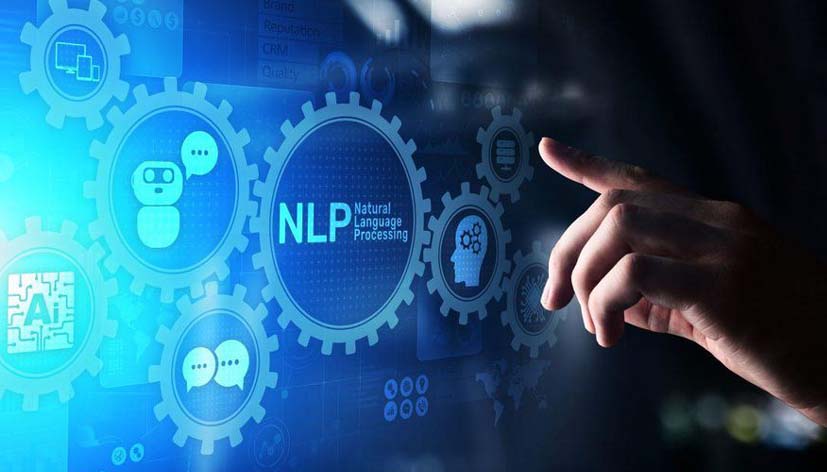In the ever-evolving landscape of artificial intelligence, one of the most fascinating and essential subfields is Natural Language Processing (NLP). NLP is a branch of AI that enables machines to understand, interpret, and generate human language. It aims to bridge the gap between the way humans communicate and the way computers traditionally process data. By harnessing the power of NLP, we can create intelligent systems capable of comprehending and responding to human language, revolutionizing various industries and enhancing user experiences.
How NLP Works
NLP encompasses a wide range of techniques and algorithms to process natural language. At its core, NLP involves the following key steps:
Text Preprocessing: This initial stage involves cleaning and transforming raw text data by removing punctuation, converting text to lowercase, and handling common text issues like spelling errors and abbreviations.
Tokenization: Tokenization breaks down text into smaller units, such as words or subwords, making it easier for computers to process and understand.
Linguistic Analysis: NLP algorithms analyze the linguistic structure of the text, including parts of speech, syntax, and grammar.
Entity Recognition: NLP systems can identify and categorize entities in the text, such as names of people, organizations, locations, dates, and more.
Semantic Understanding: This stage involves mapping words or phrases to their meaning and context. Word embeddings and deep learning techniques are commonly used for this purpose.
Sentiment Analysis: NLP can determine the sentiment or emotion expressed in a text, which is valuable for sentiment monitoring and opinion mining.
Language Generation: This advanced capability allows machines to generate human-like responses or text based on context and input.
Applications of Natural Language Processing
The widespread adoption of NLP has led to its integration into numerous applications across various industries, revolutionizing how we interact with technology. Some key applications of NLP include:
Virtual Assistants: NLP powers virtual assistants like Siri, Alexa, and Google Assistant, enabling them to understand voice commands, answer questions, and perform tasks on behalf of users.
Chatbots and Customer Support: NLP-driven chatbots facilitate real-time interactions with customers, providing instant responses and addressing queries across diverse industries, from e-commerce to healthcare.
Language Translation: NLP has significantly improved machine translation services, allowing users to communicate with people from different linguistic backgrounds with greater ease.
Information Retrieval: NLP enhances search engines by understanding user queries more effectively, ensuring more accurate and relevant search results.
Sentiment Analysis and Social Media Monitoring: NLP algorithms analyze social media data to gauge public sentiment, helping businesses and governments understand public opinions and attitudes.
Email Filtering and Spam Detection: NLP is employed to filter out spam emails and classify messages, ensuring important emails reach users’ inboxes.
Text Summarization: NLP techniques can automatically generate summaries of lengthy texts, saving time and improving content comprehension.
Medical NLP: In healthcare, NLP assists with clinical documentation, medical coding, and analyzing patient records to improve diagnosis and treatment.
Financial Analysis: NLP is utilized in the financial sector to analyze news articles, reports, and social media for sentiment analysis, market prediction, and risk assessment.
Benefits of Natural Language Processing
The integration of NLP into various applications offers a multitude of benefits, some of which include:
Enhanced User Experience: NLP enables more natural and intuitive interactions with machines, making technology more user-friendly and accessible to a broader audience.
Increased Efficiency: Automated NLP processes save time and resources by handling repetitive tasks, such as customer support, information retrieval, and data analysis.
Improved Decision Making: NLP-driven data analysis provides valuable insights from unstructured text, empowering businesses and individuals to make informed decisions.
Multilingual Communication: NLP facilitates cross-language communication, breaking down language barriers and promoting global collaboration.
Personalization: NLP-powered systems can personalize user experiences based on language preferences, sentiment, and past interactions, leading to more relevant content and recommendations.
Data Insights and Analytics: NLP techniques extract valuable information from unstructured data, augmenting traditional data analytics approaches.
Challenges and Future Prospects
While NLP has made impressive strides, it still faces challenges in understanding context, handling ambiguous language, and bias reduction. Ongoing research and advancements in machine learning and deep learning promise to overcome these limitations and further enhance NLP’s capabilities.
In conclusion, Natural Language Processing has emerged as a pivotal AI technology, empowering machines to understand, interpret, and respond to human language. With its diverse applications and myriad benefits, NLP continues to shape how we interact with technology, leading us towards a more connected and efficient future. As research in NLP progresses, we can expect even more exciting breakthroughs and transformative applications in the years to come.
























